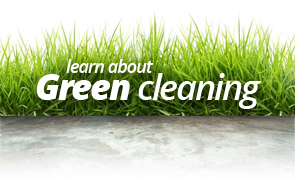We’re proud of their service to our country and thankful for the protection they provide for our American way of life. Let’s remember to thank those who serve, those who sacrifice and their families.
Posts by learys
Honor our veterans.
We’re proud of their service to our country and thankful for the protection they provide for our American way of life. Let’s remember to thank those who serve, those who sacrifice and their families.
Honor our veterans.
We’re proud of their service to our country and thankful for the protection they provide for our American way of life. Let’s remember to thank those who serve, those who sacrifice and their families.
Honor our veterans.
We’re proud of their service to our country and thankful for the protection they provide for our American way of life. Let’s remember to thank those who serve, those who sacrifice and their families.
Scarf do’s and don’ts.
Definitely add fashionable, warm scarves for winter. After wear, untie, smooth and hang gently so the wrinkles can naturally relax. Never iron a scarf after wear – the heat can darken and set invisible soils and skin oils. Always wear a scarf with fur, leather and suede to prevent collar soiling from skin oils or makeup. When your scarf needs freshening, we suggest hand finishing to preserve the hand rolled hem or fragile fringe.
Fall behind on Sunday.
When Daylight Savings Time ends this Saturday night, winter’s right behind. Now’s the time to store away your warm weather clothes. It’s a good tradition and a great way to make closet space for the bulkier winter clothes. Just don’t add moth balls to your stored garments — instead use cedar chips or dried lavender. Be sure to clean everything thoroughly before storing—stains and yellowing can develop over time on garments that aren’t 100% clean.
Corduroy wales.
Classic autumn favorite corduroy needs special cleaning care to preserve the rich velvety pile and prevent shrinking. If your corduroy is garment is washable, check the label for specifics before throwing it in the wash. Never wash with lint producers like fleece, felt or terry. Use the right water temperature, wash like colors together, and turn the garment inside out to wash. Then air dry until barely damp, tumble dry for ten minutes at lowest temperature to fluff the nap. Pull from dryer and shake out, turn back right side out and brush nap to remove any lint or surface wrinkles. Or skip all that and let us dry clean your corduroy for like-new results.
Halloween is around the corner.
Is your costume fresh and ready to wear? You’d be surprised how many costumes we clean every year. Let us clean your outfit so the only scary thing about it is meant to be! Need some ideas? Check out this Pinterest page with home-made costumes for kids and adults.
Sweater Care part 2
Never hang a sweater; it’ll droop and sag. Instead, fold and store in a drawer. If you must hang, fold in half over a cardboard-crossbar hanger (like we do). We can block your sweaters back to shape when we finish them, and our gentle cleaning prevents shrinkage. If your sweater is wrinkled, a light pressing with steam will freshen it, but be sure to use a pressing cloth to prevent adding shine. Or better yet, bring it to us. We can even add elbow patches to worn favorites.
Sweater Care part 1
Now that it is sweater weather in many parts of the states, here is how you can keep your sweaters looking fresh. Remove lint and pet hairs with a lint roller or wrap your hand with tape, sticky side out, for a clean look. Pills (those little bumps right above the smooth weave) can be removed with a pumice stone, scissors or simply shave them off with a disposable razor. For those little snags inside, pull through with a crochet hook and weave back into the sweater. Sound too tricky? Bring us your knits for expert cleaning and repair.





